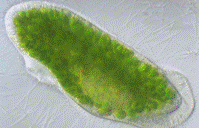Biological Sciences, School of

School of Biological Sciences: Faculty Publications
Document Type
Article
Date of this Version
2008
Abstract
Vast areas of arable land have been retired from crop production and ‘‘rehabilitated’’ to improved system states through landowner incentive programs in the United States (e.g., Conservation and Wetland Reserve Programs), as well as Europe (i.e., Agri-Environment Schemes). Our review of studies conducted on invasion of rehabilitated agricultural production systems by nontarget species elucidates several factors that may increase the vulnerability of these systems to invasion. These systems often exist in highly fragmented and agriculturally dominated landscapes, where propagule sources of target species for colonization may be limited, and are established under conditions where legacies of past disturbance persist and prevent target species from persisting. Furthermore, rehabilitation approaches often do not include or successfully attain all target species or historical ecological processes (e.g., hydrology, grazing, and/or fire cycles) key to resisting invasion. Uncertainty surrounds ways in which nontarget species may compromise long term goals of improving biodiversity and ecosystem services through rehabilitation efforts on former agricultural production lands. This review demonstrates that more studies are needed on the extent and ecological impacts of nontarget species as related to the goals of rehabilitation efforts to secure current and future environmental benefits arising from this widespread conservation practice.


Comments
Published in Environmental Management (2008) Copyright © Springer Science+Business Media, LLC 2008